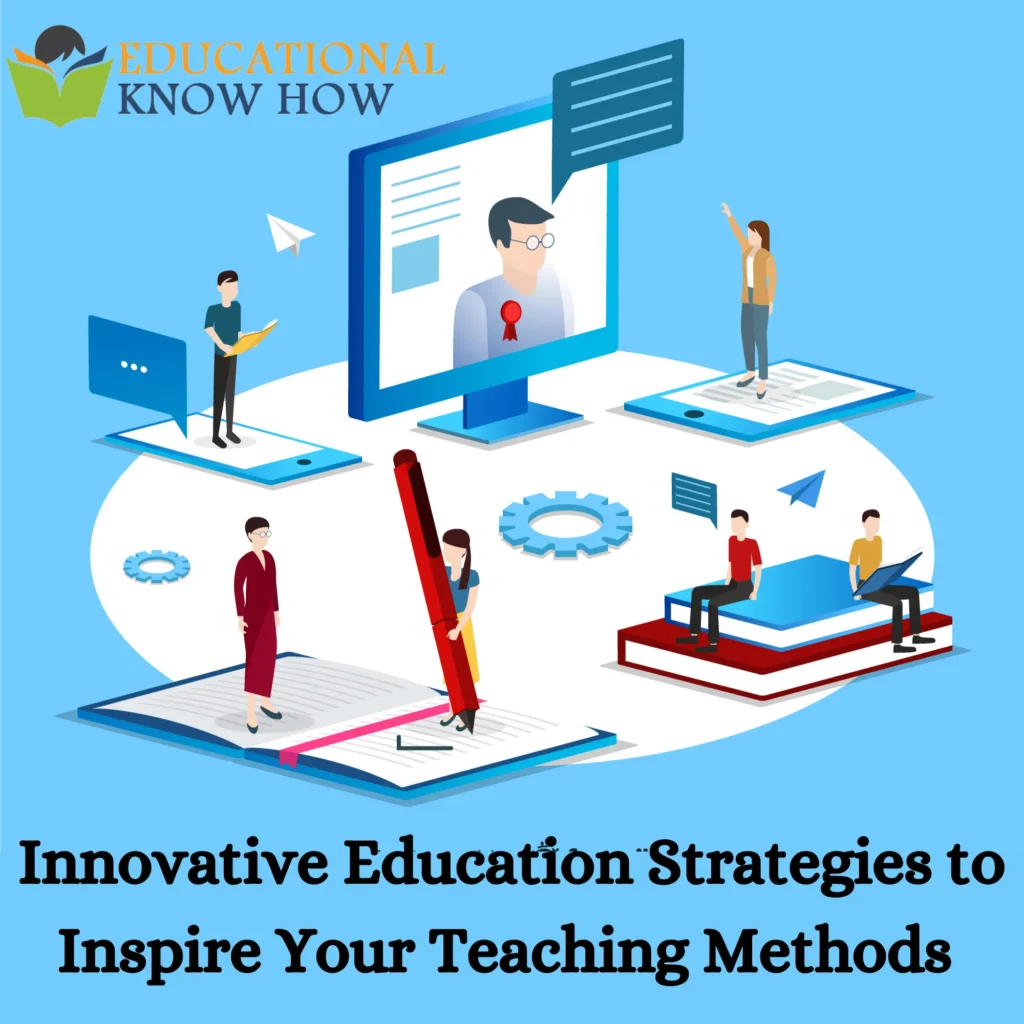
Implementing innovative teaching methods in classrooms encourages student engagement and enhances learning experiences. Embracing innovation leads to a dynamic learning environment that caters to diverse learning styles and ignites curiosity in students to learn more.
Innovative teaching methods foster creativity, critical skills, and problem-solving skills in students that prepare students to face the challenges of the world by leading them to the path of life-long learning. Students can enhance their learning by gaining knowledge from the best educational blogs that further enhance their knowledge.
Embracing innovative strategies in teaching methods creates a positive learning environment and improves students’ academic performance by making them more adaptive.
“It is the supreme art of the teacher to awaken joy in creative expression and knowledge” – Albert Einstein. So, here our education blog lists a few innovative education strategies that result in better learning outcomes and maximize students’ potential.
Project-Based Learning
Project-based learning, or PBL, is a practical learning approach that aims to solve problems by working on different projects. Working on different hands-on projects allows students to apply their knowledge and develop learning from various disciplines. Besides ensuring maximum participation of students, Project-based learning teaches students to tackle real-world scenarios and challenges by improving collaborative skills, problem-solving skills, and even digital skills when online learning is involved.
Inquiry-Based Learning
Inquiry-based learning is a teaching method that emphasizes the active engagement of students and the implementation of their critical thinking. Inquiry-based learning involves posing questions, investing topics, and scenarios. Students then work on these questions and seek answers through exploration and discovery. Inquiry-based learning is different from the lecture-style format, and students become investigators and problem-solvers rather than recipients of the information. Students actively participate by referring to the best educational blogs and other references and take ownership of their education Teachers act as facilitators and provide support only where needed and instil self-learning among students.
Peer Teaching
The peer-teaching approach of teaching creates a collaborative and interactive learning environment where students can learn from each other’s knowledge and perspectives. In this education strategy, teachers facilitate learning from peers by teaching and explaining concepts, discussing concepts, and providing feedback to each other. Reinforcing peer teaching leads to independent study in students, better presentation skills, and improved confidence. It also creates a supportive and inclusive classroom community where students learn from one another to expand their learning of the subject matter.
Open-Ended Questions
Students completely rely on their course material and perceive that are only right and wrong answers, but most questions do not have a right or wrong answer. Open-ended questions require students to present their opinions and explanation. Students can combine different learnings and form an explanation for their answers. This question-and-answer learning promotes deeper understanding, fosters discussion, and stimulates higher-order thinking skills.
Blended Learning
Blended learning is all you need to impart the best education in this digital era. Blended learning is a hybrid approach to learning where physical learning and online learning are combined to deliver education by leveraging the benefits of personal interactions and the flexibility of online resources.
Blended learning allows a more student-centric approach, fulfilling individual learning preferences and providing opportunities for self-paced learning. Educational blogs for students serve as valuable resources, offering additional information and interactive discussions that complement classroom instruction.
Conclusion
Diversifying teaching methods and learning approaches creates a learning space that expands students’ learning by considering each student’s potential and learning methods. These innovative teaching strategies can help enhance the knowledge of students through active learning. All these strategies encourage student engagement and learning through the best educational blogs that lead to students’ intellectual growth. Moreover, active learning shaped through innovative teaching strategies boosts collaboration in students and encourages them to discuss, participate, and learn more. The next time you want to bring a productive change in your teaching methodology, try out these teaching techniques and witness the change in the learning outcomes.
Stay connected with the best educational blogs to stay updated on the advancements in the education field and discover new strategies that can revolutionize your teaching and inspire your students’ learning journey!
